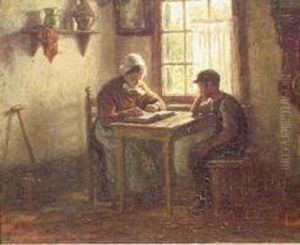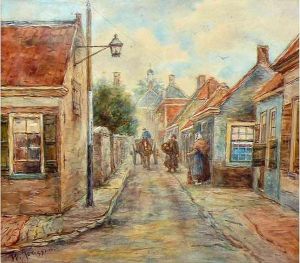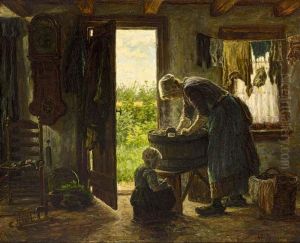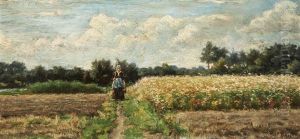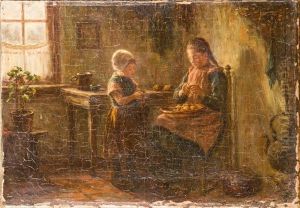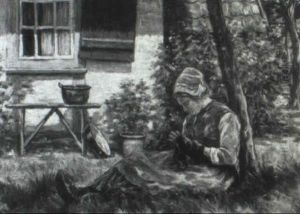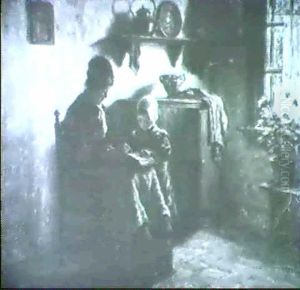Willem Jorissen Paintings
Willem Jorissen was a Dutch painter and etcher, best known for his landscape paintings and his role in the Dutch art scene at the turn of the 20th century. Born on October 19, 1867, in The Hague, Netherlands, Jorissen developed an interest in art at a young age and pursued his passion by studying at the Royal Academy of Art in The Hague.
Jorissen's early work was influenced by the Hague School, a group of artists who worked in and around The Hague between 1860 and 1890. The Hague School artists were known for their realistic depictions of the Dutch countryside, and they often portrayed the nation's landscapes and daily life with a somber, tonal palette. Jorissen embraced these themes but gradually developed his own style, characterized by a more vivid use of color and a focus on the effects of light.
Throughout his career, Willem Jorissen exhibited his work widely and participated in numerous art societies. His works were appreciated for their serene beauty and their ability to capture the essence of Dutch rural scenes. Jorissen's landscapes often featured waterways, windmills, and pastoral settings that conveyed a sense of tranquility and nostalgia for a disappearing way of life.
Despite his successes, Jorissen's name is not as widely recognized today as some of his contemporaries. Nevertheless, he made significant contributions to the Dutch art world, and his paintings are collected and admired by those with an interest in the period.
Willem Jorissen's life spanned significant historical events, including two World Wars, which impacted the Netherlands and the art world. He passed away on January 29, 1946, in The Hague, leaving behind a legacy of artwork that continues to be appreciated for its quiet beauty and its reflection of Dutch culture during a pivotal era.
